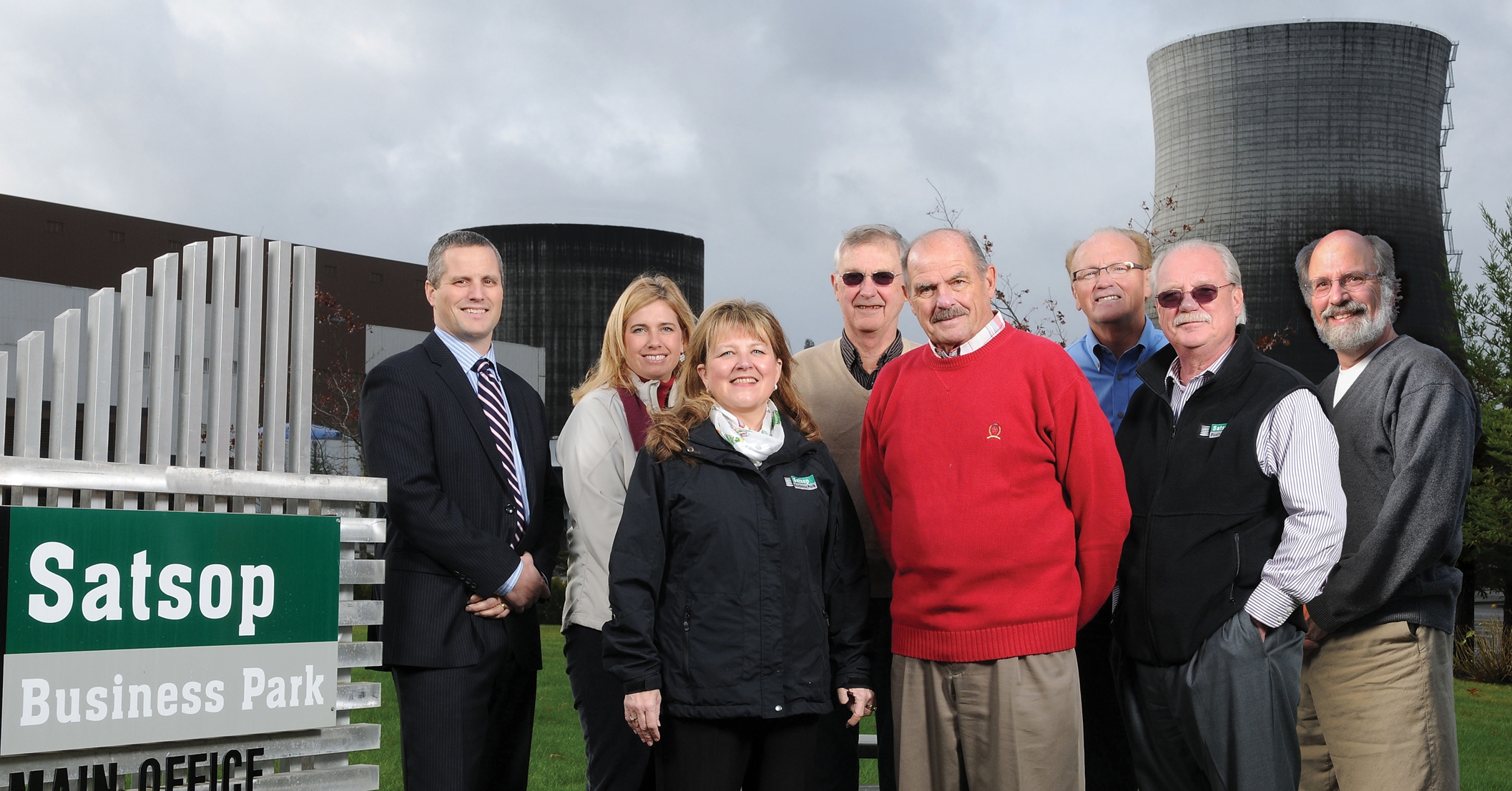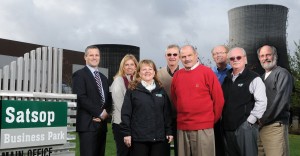
Submitted by Satsop Business Park

ELMA – More than a dozen years after a Public Development Authority was created to transform an abandoned nuclear power plant site in Elma, Wash., into a mixed-use business park, the Board of Directors for the Grays Harbor Public Development Authority, having done its job, will hand over the reins to the Port of Grays Harbor in January.
“The Satsop Business Park has come of age,” said Tami Garrow, CEO of the Grays Harbor PDA, whose announced retirement in March 2013 intensified the Board’s strategic planning discussions about the Park’s future.
“The hard work, vision and commitment of a handful of courageous board members, the creative thinking and sharp skills of our staff and counsel, and the leadership exhibited by every member of this organization, built the Satsop Business Park into something the entire community can be proud of,” Garrow said.
Once the board realized that the timing was right to consider bold actions that would ensure the Park’s future, the choice of consolidating Satsop’s assets with the Port of Grays Harbor became an obvious one, said Steve Poler, PDA chairman.
“Satsop Business Park will be a great community asset for the Port to manage. The Port can use all the developable land, storage facilities and great infrastructure that the Park has to offer to benefit the region by attracting more businesses, creating jobs and providing skilled workforce training opportunities.
“Handing the reins over to the Port Commission is the perfect way to end this first chapter of the Park’s life. We’re proud of what’s been accomplished at the Park and what an asset to the community it has become,” Poler said.
The transition provides a good opportunity to review what has been accomplished over the past 13 years. Satsop Business Park was established in August of 1999 on the site of what was an unfinished nuclear power plant that had sat idle since the mid 1980s.
Having been there since the Park’s inception, Garrow can recall the transformative events that helped Satsop Business Park become what it is today.
• $3 million worth of new roads, utilities, landscaping and signage to and through the Park were built. This changed the look and feel at the site from an abandoned construction project to the look and feel of a true business park.
• Aggressive renovation of existing buildings was undertaken to provide immediate homes to businesses seeking to locate at the Park.
• $19 million in grant funds and $5.15 million in low-interest loan funds were awarded for Park improvements, including construction of new
buildings, installation of telecom, water and sewer infrastructure, and conversion of former nuclear facilities to usable structures.
• The Park’s first Comprehensive Master Plan was adopted, including its own zoning designation, development guidelines, and a roadmap for the future, providing certainty for future developers.
• A landmark agreement was signed with the Washington State Department of Wildlife to return 1,200 acres of “mitigation” land back to the Park to be managed for the benefit of the community. Those lands now generate sustainable income from the forests, provide an ideal environment for training and education, and provide improved wildlife habitat, recreational uses and public access.
• An innovative new forest management program was developed with Grays Harbor College, which has since received the Pacific Northwest Champion Award from the US Forest Stewardship Council.
• A wide variety of workforce training programs have been established that play a key role in the Park’s ongoing business operations. The Park helped to secure a $5 million U.S. Dept. of Labor grant for the Pacific Mountain Workforce Development Council (now located at the Park), which resulted in the creation of the Regional Education and Training Center at Satsop. The Park hosts the annual Try-a-Trade Day, sponsored by the Washington State Labor council, the annual PNW Energy Summit, a year-round Laborers Training Trust pre-apprenticeship program, and dozens of battalions from Joint Base Lewis-McChord who train at the Park for a variety of national security needs. Completion of a new Tunnel Training prop, in partnership with the Seattle Fire Dept. and the NW Laborers, is attracting groups from around the country for specialized training.
Through it all, the Satsop Business Park has operated in the black every year for the past 11 years, built two solid years’ worth of operating capital reserves and has no debt.
“We have acquired additional land for development and built infrastructure to accommodate new growth well into the 21st Century. We close our chapter of Grays Harbor history with our heads held high, our coffers full, and our assets carefully managed and groomed for future growth,” said Garrow.
“It has been a privilege to play a lead role in our transformation from abandoned nuclear plant to world-class business park, and I thank each and every person who has shared the journey with me,” she said.
“With our consolidation with the Port of Grays Harbor, we leave the Park in good hands, thanks to the vision and courage of our Board, the dedication of our staff, and the solid partnerships we have developed over the past decade. For the Satsop Business Park, the future is bright indeed.”
Satsop Business Park is a 1,850-acre mixed-use business and technology park located in scenic Grays Harbor County in Southwest Washington just 30 minutes from Olympia and the I-5 corridor. It is home to more than 30 businesses, offers 440 acres of developed, pad-ready land and buildings supported by super-sized infrastructure and surrounded by 1,350 acres of sustainable managed forestland.



















































